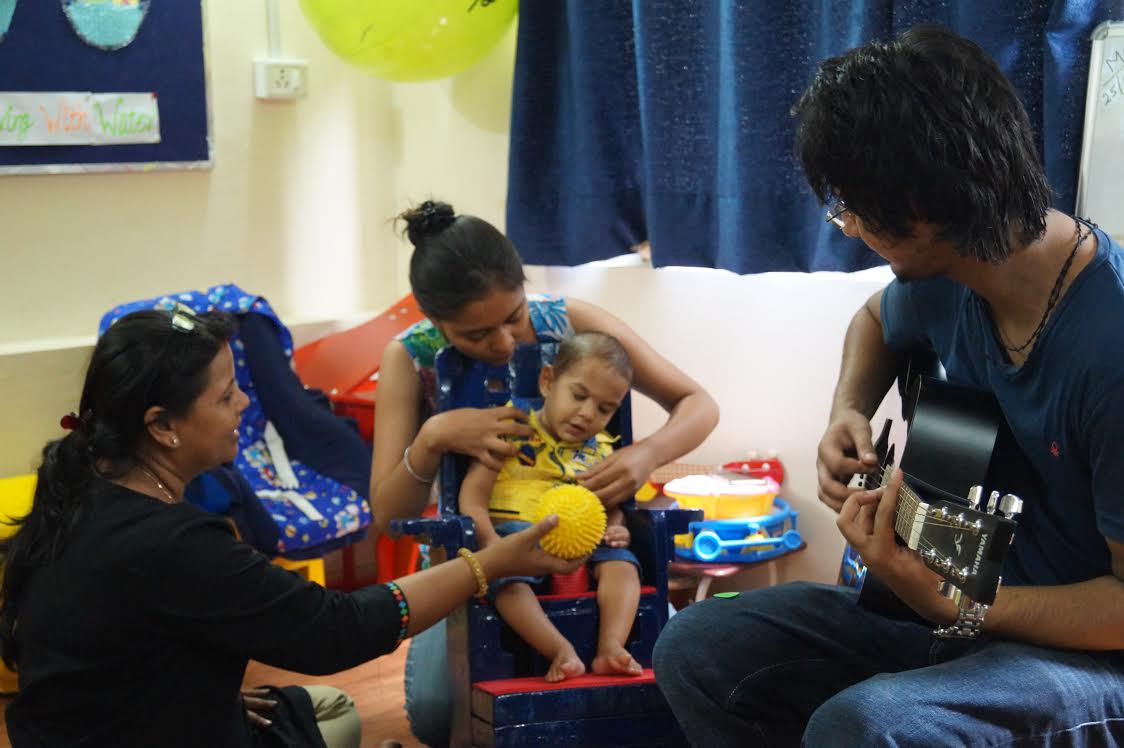This article discusses some important development milestones that are accompanied by your baby’s growth. It shares fun ideas and practical methods to speed up the developmental journey.
By Supriya Das
Reaching, rolling and sitting up are important development milestones for your baby. These will lay the groundwork for crawling, standing and walking, which are discussed further below in the article.
- Reaching. Keep audible toys and bumpy and textured toys close to the baby. Encourage it to reach for and grab the toys by rattling them or giving verbal prompts. You can also hang toys that make sounds above the baby on a suspension rod. This will motivate your baby to listen and extend its arm to get it. Ensure that the toys are within arm’s reach.
- Rolling. In order to motivate the baby to roll, keep audible toys or other objects of interest on either side. Encourage the baby to roll and grab an object by giving verbal prompts. You can also try using a pillow to provide some level of support. Another way could be that you sit on the floor with your legs wide and straight. Place the baby in between them and do the same activity. Use your legs to provide support to him/her to roll from either side. Reduce support when the baby starts rolling independently.
- Sitting up. Sit and take your baby in your lap while holding it by the waist (as low as you can). Holding low from the waist will help your baby gain control and balance the upper trunk. You can also sit behind the baby and support it through your body.
Crawling, standing and walking are very important physical milestones. These are usually delayed in babies with vision impairment.
- Crawling. Crawling is a crucial step to standing and walking. It helps in developing hand-body-foot coordination, increases tactile tolerance, builds confidence and helps the baby explore a variety of objects, textures and spaces in the environment. Do baby proof your house in order to prepare for this exercise. Some practical tips are given below:
- Help your baby take all four positions. You can model postures to the baby while playing with it. Help it rock on all fours by giving slight support from the waist. Talk to the baby in a steady stream.
- Keeps audible toys and textured objects within arm’s length and prompt the baby to touch it. When it tries to extend the arm to reach for the toy, you can softly grab the legs from behind and push them one after the other.
- Your baby is going to be all over the place once it masters the skill of crawling. Hence, to give maximum learning exposure, keep a variety of toys and objects on the way that your baby can come across, stop by, touch and manipulate. You can also place door mats of different textures at the entrance of each room in your house. This will help the baby develop a good mental map of the entire house. As it will recognize different rooms in the home, through mental association with the mats, try not to change them.
- Standing. Your baby will try to stand once it learns to crawl. Keep toys and objects of interest on chairs or sofas. Talk to the baby while encouraging it to play with toys. Keep the time short as standing requires a lot of balance and lower body strength. After playing, help your baby to sit. Repeat and give ample practice.
- Walking.
- Keep toys and interesting objects out of your baby’s reach while it is standing along the sofa or chair. Encourage your baby to take small side steps to grab the toys.
- Make the baby stand against the wall and encourage it to take small steps towards you. Give hand support to your baby. Be cheerful and engage in baby talk. This will help your baby to gain confidence. Give ample supported walk practice to your baby and gradually decrease the support. Move from supporting the baby with both hands to supporting the baby with a finger. Later you can use a prop like a tray, book, or toy to provide support.
- Your baby can hold one end of the object while you hold the other end. Slowly you can prompt it to take steps towards you. Decrease the support gradually. Appreciate and provide lots of positive reinforcement when the baby starts to take independent steps.These were just a few activities that can surely be of help to our babies with vision impairment in achieving developmental milestones. Expert support and guidance is always required in order to better understand the baby’s needs, strengths and accordingly develop a holistic plan of action.
Some useful links and reading resources:
1. http://www.wonderbaby.org/. Find activities, strategies and suggestions by parents for young children with vision impairment and multiple disabilities.
2. http://www.tsbvi.edu/infants/3293-the-impact-of-visual-impairment-on-development. You can find lot of information on early childhood and parenting children with vision impairment.
About the Author
Supriya Das is Program Coordinator at the Infant to Toddler Program at Saksham, an NGO that works in the domain of disability. Her area of expertise involves working with children with visual impairment, deaf-blindness, and multiple disabilities. She also works with parents, caregivers, and communities to create awareness and provide training.
At Saksham’s Infant to Toddler Program, early intervention services are provided to children with sensory impairment (age 0-4) and training support to their families. Connect to Saksham on Facebook at https://www.facebook.com/SakshamIndia2003/. For more information, Supriya can be reached at supriya.das07@gmail.com. She also writes a blog on teaching and learning strategies for children with visual impairment, deaf-blindness and multiple disabilities which can be accessed at http://igrowup.weebly.com/


Facebook comments